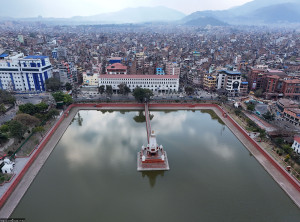Money
Few takers show up for loans under Business Continuity Credit Plan
The scheme allows firms left cashless by Covid-19 to borrow funds to pay their employees.
Prithvi Man Shrestha
Sanima Bank last week approved a loan worth around Rs10 million for a hotel under the government’s Business Continuity Credit Plan. The scheme allows micro, small and medium enterprises and tourism businesses left cashless by Covid-19 to borrow funds to pay their employees. Borrowers have to pay 5 percent interest the first year and 6 percent the following year.
“We approved the first loan last Thursday,” said Bhuvan Dahal, chief executive officer of Sanima Bank. “More than half a dozen applications are under consideration for approval. At my bank, most of the applications for credit under the government package have come from the hotel sector,” he said.
But demand for loans under the Business Continuity Credit Plan has fallen short of expectations, bankers said. They attributed the lacklustre response to a provision in the working procedure which bars enterprises that have received subsidised credit under other windows from getting loans under this plan.
According to Chief Executive Officer Ashoke Rana of Himalayan Bank, his bank has not received any request for credit under the government’s package, but it has been extending refinance facility to a lot of borrowers.
“Many enterprises who enjoyed refinance facility didn’t ask for a loan under the government’s package,” he said.
The central bank said it had released funds totalling more than Rs85 billion under refinance facility. Clause 10 of the working procedure states that borrowers who are enjoying subsidised credit facility from banks and financial institutions, government agencies or donors are not eligible to get loans under this scheme.
Dahal, who is also president of the Nepal Bankers’ Association, said that he had not yet seen massive demand for credit under the government’s rehabilitation package.
“Eight to nine other banks have communicated to me that they have received requests for credit from some borrowers,” he said. “But overall demand for credit does not appear to be significant so far,” he said.
The government released a working procedure in late November, nearly six months after announcing a Rs50 billion package for the current fiscal year through the budget statement in May. A few days later, the central bank asked banks and financial institutions to provide credit in line with the working procedure.
In a recent interview with the Post, Binayak Shah, first vice-president of Hotel Association Nepal, said that the government’s relief package was implemented when many hotels and restaurants were shuttered. “Had the credit facility been made available a few months earlier, many of the enterprises that have shut down would have survived.”
The central bank said that the targeted businesses could now get credit in line with the working procedure with banks also completing their homework for extending loans. “Some banks have already started extending credit,” said Dev Kumar Dhakal, executive director of Nepal Rastra Bank.
As per the working procedure of the two-year credit programme, an enterprise from the most affected sectors can get up to Rs100 million credit while enterprises from the sector that is facing medium-level impact can get up to Rs70 million. Enterprises from the partially affected sector can get up to Rs50 million.
Half of the loan can be used to pay staff salaries, and half can be used as working capital to continue the business. An enterprise cannot fire any employee as long as the credit facility is in effect.
The government has injected just Rs1 billion so far in rehabilitation funds amid decreasing revenue collection, and concerns are being raised over how it would be able to generate Rs50 billion.
As per the budgetary provision, the sources of funds for the rehabilitation package will be foreign aid, government-owned entities and the government’s own resources.
Dhakal said that various government agencies had already pledged to provide Rs18 billion in rehabilitation funds. In addition to the Rs1 billion from the government, the central bank has deposited Rs1.5 billion, according to Dhakal. Nepal Rastra Bank has pledged to inject Rs3 billion.
“Nepal Oil Corporation has promised to provide Rs5 billion while the Employees Provident Fund has assured Rs4 billion soon,” Jhakka Acharya, joint secretary at the Finance Ministry, told the Post in a recent interview.
According to him, the Citizen Investment Trust has promised to inject Rs2 billion while Nepal Reinsurance Company, Rastriya Beema Sansthan and Deposit and Credit Guarantee Corporation have pledged Rs1 billion each immediately.




 25.53°C Kathmandu
25.53°C Kathmandu














